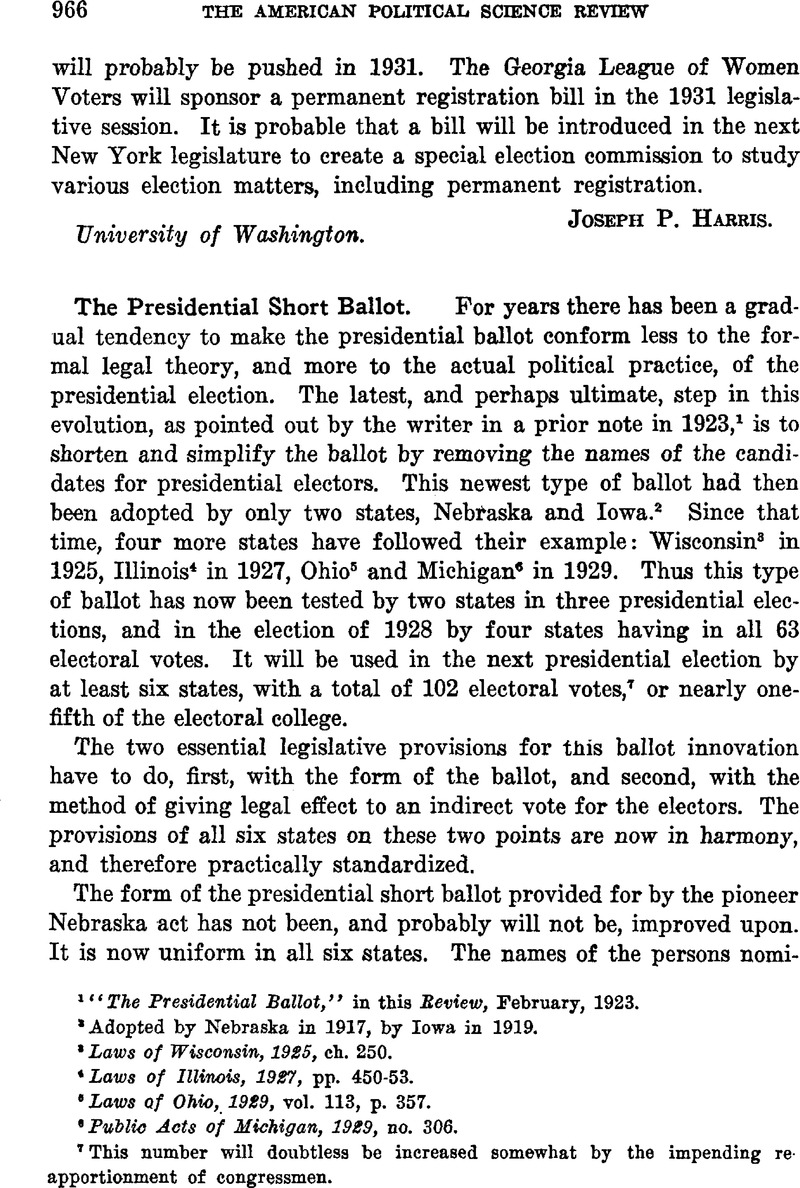No CrossRef data available.
Article contents
The Presidential Short Ballot
Published online by Cambridge University Press: 01 August 2014
Abstract

- Type
- Legislative Notes and Reviews
- Information
- Copyright
- Copyright © American Political Science Association 1930
References
1 “The Presidential Ballot,” in this Review, February, 1923.
2 Adopted by Nebraska in 1917, by Iowa in 1919.
3 Laws of Wisconsin, 1925, ch. 250.
4 Laws of Illinois, 1927, pp. 450-53.
5 Laws of Ohio, 1929, vol. 113, p. 357Google Scholar.
6 Public Acts of Michigan, 1919, no. 306.
7 This number will doubtless be increased somewhat by the impending reapportionment of congressmen.
8 U. S. Compiled Statutes, title III, sec. 199.
9 Laws of Iowa General Assembly, 1919, ch. 86, sec. 6.
10 Laws of Nebraska, 1927, oh. 105.
11 On the other hand, the complete separation of the vote for president from that for state and local officials is destroyed. Voters may now vote a straight ticket—national, state and local—with one mark in the party circle. This merging of the ballots will therefore undoubtedly increase the influence exerted by the national upon the state and local tickets.
12 For other advantages of this type of ballot not mentioned above, see “The Presidential Ballot,” in this Review, Feb., 1923, p. 94.
13 McPherson v. Blacker (1892), 146 U. S. 34-35.
14 Senate Eeport, 43rd Cong., 1st Sess., No. 395.
15 U. S. Const., Art. II, Sec. I, Clause 2.





Comments
No Comments have been published for this article.